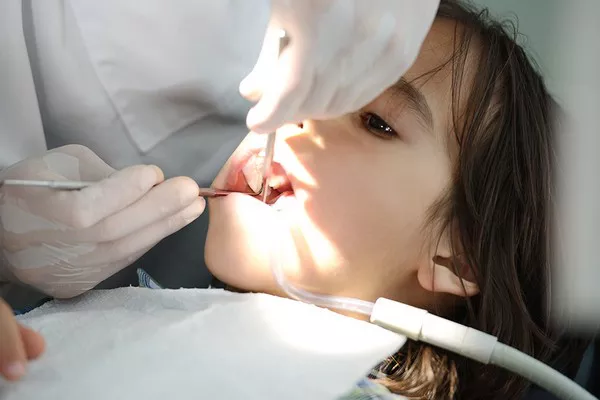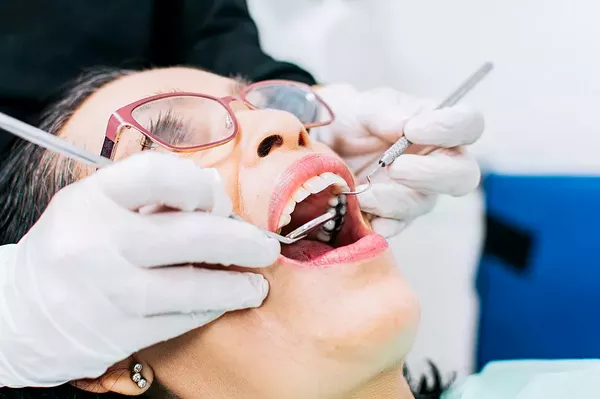Maintaining optimal oral health is a priority for many individuals, and dental fillings play a crucial role in addressing cavities and preserving the integrity of teeth. However, concerns about the cost of dental procedures often arise, leading individuals to wonder, “How much does a filling at the dentist cost?” In this comprehensive article, we will explore the factors influencing the cost of dental fillings, different types of fillings available, considerations for payment and insurance, and tips for managing dental expenses.
Understanding the Types of Dental Fillings
Before delving into the costs associated with dental fillings, it’s essential to understand the different types of fillings available. The choice of filling material can significantly impact both the longevity of the restoration and the overall cost. Common types of dental fillings include:
Amalgam Fillings:
Amalgam fillings, also known as silver fillings, have been used for decades. They consist of a mixture of metals, including silver, tin, copper, and mercury. Amalgam fillings are known for their durability and cost-effectiveness. However, their silver color makes them more noticeable than tooth-colored alternatives.
Composite Fillings:
Composite fillings are made of a mixture of plastic and fine glass particles. These fillings are tooth-colored, making them a popular choice for visible teeth. Composite fillings bond directly to the tooth, providing a more natural appearance. While they may be more aesthetically pleasing, composite fillings are generally more expensive than amalgam.
Ceramic Fillings:
Ceramic fillings, often made of porcelain, are tooth-colored and resistant to staining. They offer excellent aesthetics and durability. Ceramic fillings are a premium option, typically more expensive than both amalgam and composite fillings.
Gold Fillings:
Gold fillings, while less common, are known for their durability and biocompatibility. They are often used for back teeth where strength is crucial. Gold fillings are the most expensive option due to the cost of the material and the labor-intensive process of creating custom gold restorations.
Factors Influencing the Cost of Dental Fillings
The cost of a dental filling is influenced by various factors, and understanding these factors is essential for individuals seeking clarity on dental expenses. Some key factors include:
Type of Filling Material: As mentioned earlier, the type of filling material chosen significantly affects the overall cost. Amalgam fillings tend to be the least expensive, while gold fillings are the most costly. Composite and ceramic fillings fall somewhere in between.
Location of the Tooth: The location of the tooth requiring a filling can impact the cost. Teeth in more visible areas, such as the front teeth, may require tooth-colored fillings for aesthetic reasons, potentially increasing the cost compared to fillings in less visible areas.
Size of the Cavity: The size and severity of the cavity being addressed also play a role. Larger cavities may require more material and time to restore, potentially increasing the cost.
Dentist’s Expertise and Experience: The expertise and experience of the dentist performing the procedure can influence the cost. Highly experienced dentists may charge higher fees for their skills and the quality of their work.
Geographic Location: Dental costs can vary based on geographic location. In areas with a higher cost of living, dental services may be more expensive. It’s essential to consider regional variations when estimating dental expenses.
Additional Procedures: In some cases, additional procedures may be necessary, such as tooth extraction, root canal therapy, or other preparatory work. These additional procedures can contribute to the overall cost of the dental restoration.
Considerations for Payment and Insurance
Navigating the financial aspect of dental care involves understanding payment options and leveraging dental insurance coverage. Here are key considerations:
Dental Insurance Coverage: Dental insurance often covers a portion of the cost of dental fillings. The extent of coverage depends on the individual insurance plan. Some plans may cover a higher percentage of the cost for basic procedures like fillings, while others may require a greater out-of-pocket contribution.
Pre-Authorization and Estimates: Before undergoing dental procedures, especially those involving significant costs, it’s advisable to request a pre-authorization from the dental insurance provider. This process involves the dentist submitting a treatment plan to the insurance company, outlining the proposed procedures and associated costs. The insurance company then provides an estimate of the coverage.
Out-of-Pocket Costs: Even with dental insurance, individuals often have out-of-pocket costs, which can include deductibles, co-payments, and any portion of the treatment not covered by insurance. Understanding these costs in advance helps individuals plan for their financial responsibility.
Dental Savings Plans: Dental savings plans, also known as dental discount plans, are alternatives to traditional dental insurance. These plans involve paying an annual fee to access discounted rates for various dental procedures, including fillings. While not insurance, dental savings plans can help reduce out-of-pocket costs.
Payment Plans: Some dental offices offer payment plans to help patients manage the cost of treatment. These plans may involve breaking down the total cost into manageable monthly payments. It’s important to discuss payment plan options with the dental office before undergoing treatment.
Tips for Managing Dental Expenses
Managing dental expenses requires a proactive approach and strategic planning. Consider the following tips to navigate dental costs effectively:
Regular Dental Checkups: Prevention is key to avoiding extensive dental work and managing costs. Regular dental checkups help identify and address issues early, potentially reducing the need for more extensive and costly procedures.
Good Oral Hygiene Practices: Maintaining excellent oral hygiene through regular brushing, flossing, and routine dental cleanings contributes to overall oral health. This, in turn, can help prevent cavities and reduce the likelihood of extensive dental work.
Compare Prices: If cost is a significant concern, consider obtaining price quotes from multiple dental offices. Prices for dental procedures can vary, and obtaining estimates allows individuals to make informed decisions based on both quality of care and cost.
Explore Dental Schools: Dental schools often offer dental services at reduced rates, as they provide hands-on training for dental students under the supervision of experienced faculty. While treatment may take longer, it can be a cost-effective option.
Understand Insurance Coverage: Familiarize yourself with the details of your dental insurance coverage, including coverage percentages, deductibles, and any limitations. Being informed about your benefits helps you make informed decisions about your dental care.
Communicate with Your Dentist: Open communication with your dentist is crucial. Discuss your concerns about costs, explore alternative treatment options, and inquire about any available discounts or promotions.
Conclusion
In conclusion, the cost of a filling at the dentist can vary based on multiple factors, including the type of filling material, the location of the tooth, and the dentist’s expertise. Understanding these factors, exploring payment options, and leveraging dental insurance coverage are essential steps in managing dental expenses effectively.
Regular dental checkups, good oral hygiene practices, and preventive care play integral roles in minimizing the need for extensive dental work. By taking a proactive approach to oral health and staying informed about available options, individuals can maintain a healthy smile while effectively managing the costs associated with dental fillings and other dental procedures.
































